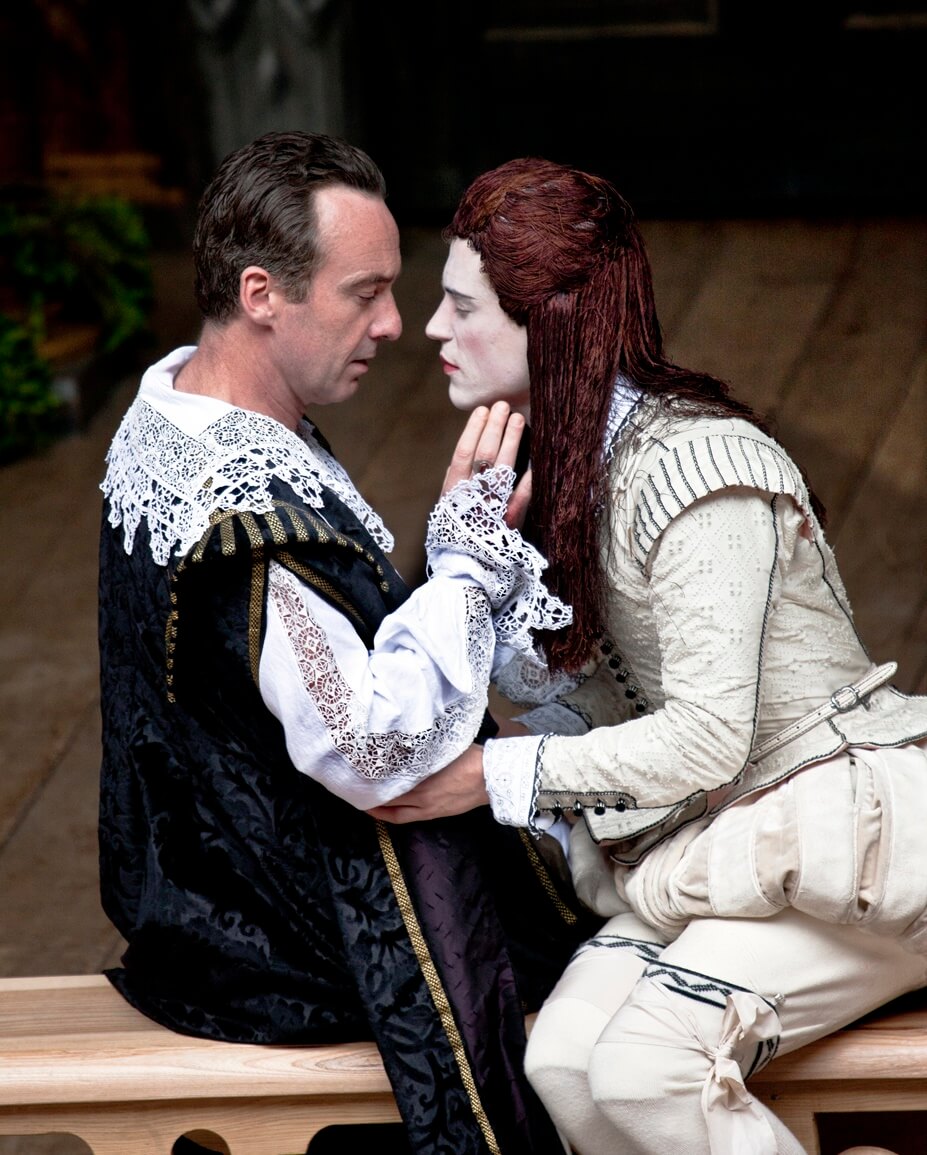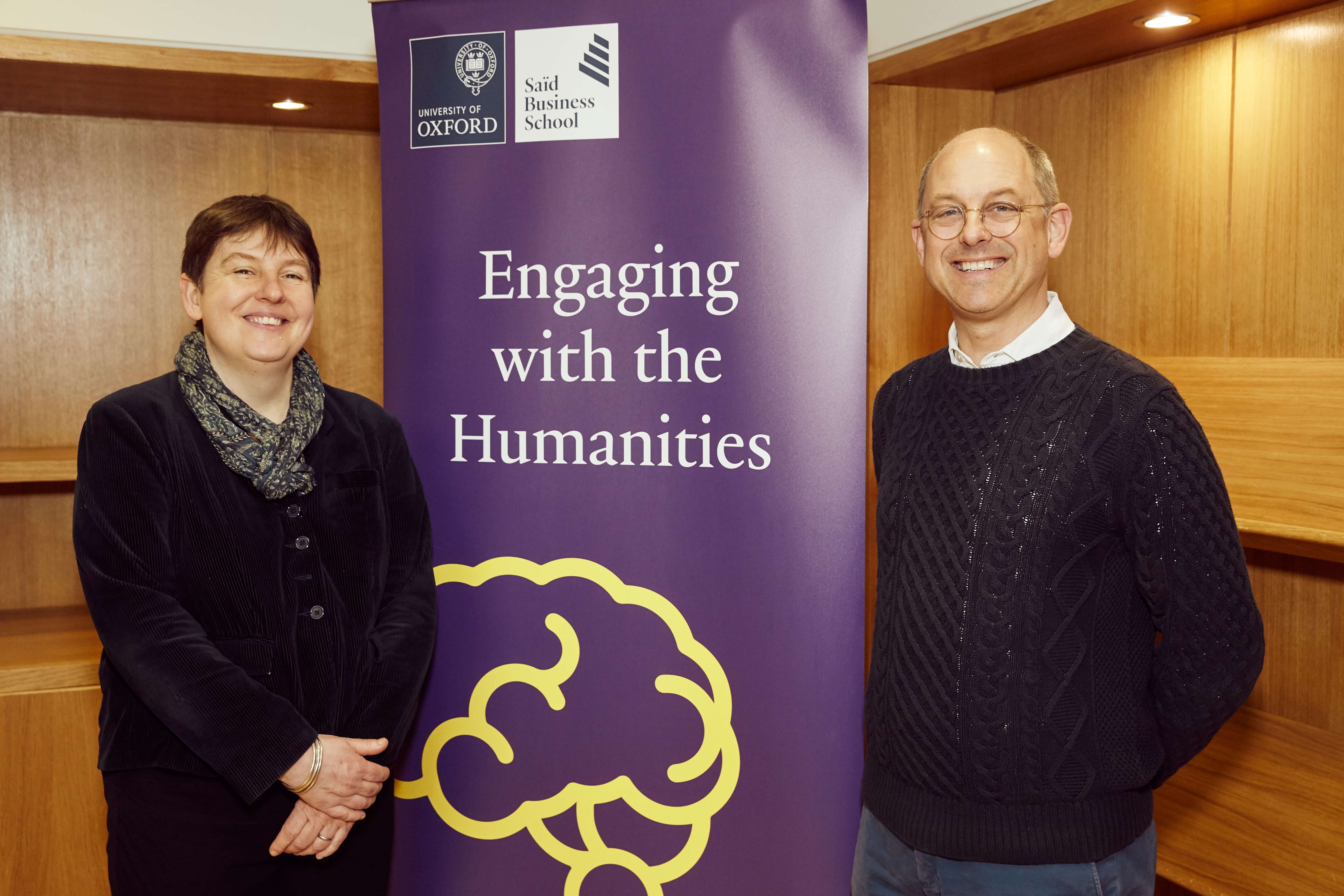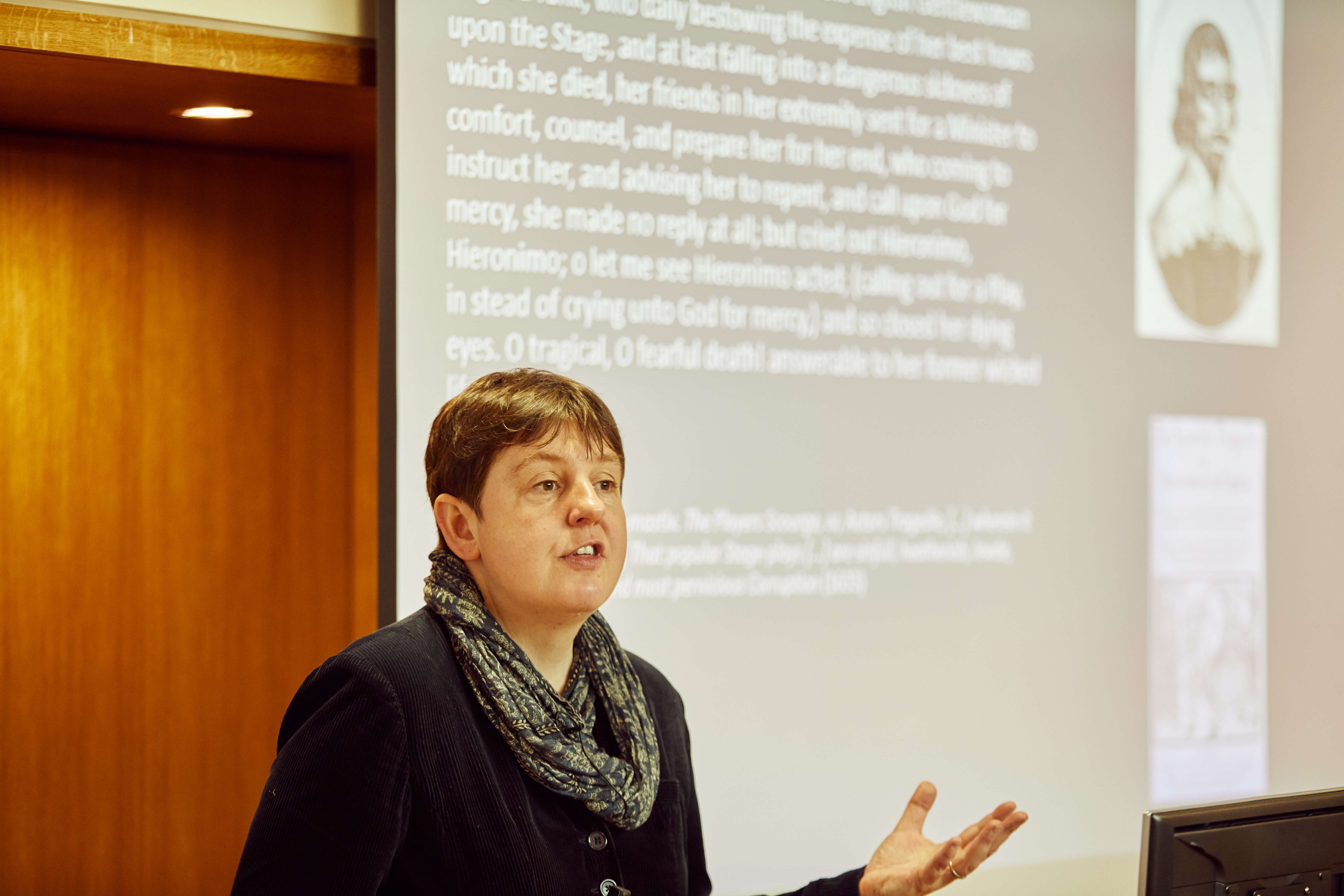Professor Emma Smith investigates the impact of women in a famously masculine environment.
It may seem to have been a world of ‘male writers, male actors, and perhaps even a largely male audience;’ but as the English Faculty’s Professor Emma Smith revealed in a talk at Oxford Saïd on 27 February 2019, the development of the Elizabethan and Jacobean theatre owed much to the presence and interest of women.
Women on the stage
Thanks to Shakespeare in Love and the television comedy Upstart Crow, if there’s one thing we know about female actors in Elizabethan and Jacobean England it is that there weren’t any. Women’s parts were played by boys and young men, which perhaps gave an added comic frisson to the cross-dressing in some of Shakespeare’s early plays.
It was therefore interesting to hear that this was not actually the result of a law. ‘We don’t know exactly why women were not allowed to perform … there is no formal prohibition, there is no legal problem. It seems to be one of those cultural norms that’s so ingrained that nobody needs to tell anyone to do it and nobody needs to challenge it,’ said Smith.
And while perhaps there were some women privately aching to strut on stage, in general the tradition of male actors playing female parts does not seem to have bothered audiences much. In fact, when the delightfully eccentric travel writer Thomas Coryat described seeing women performing on stage in Venice, he said:
For I saw women acte … and they performed it with as good a grace, action, gesture, and whatsoeuer convenient for a Player, as euer I saw any masculine Actor.
As Smith observed, ‘There is no natural sense for him that for women to play women would be automatically better, more authentic, more sexy … One of the surprising but unavoidable things about the theatre of this period was that is did not seem to feel the lack of women on the stage.’
Women in the plays
This is all the more surprising given the extraordinary parts for women that the playwrights of the period expected to be portrayed convincingly by male actors.
We can see the influence of these actors in Shakespeare’s career. ‘It is clear that in the comic plays of the 1590s he looks at the actors that he has at his disposal and he has a couple of young men who can play young, slightly adolescent-y women, and he writes parts for them. This is why we get Viola and Olivia, and Rosalind and Celia,’ said Smith.
‘It is also clear that by about 1605, Shakespeare’s company has somehow acquired an actor who can carry extraordinarily mature female roles. And for that actor Shakespeare writes Lady Macbeth, Volumnia, the mother of Coriolanus, and Cleopatra – and John Webster wrote probably the Duchess of Malfi and the White Devil for him too.’
So something changes about the representation of women between the 1590s and the first decade of the 17th century. But as Smith concluded, ‘it was as much to do with the capability of the actors as it was to do with contextual factors.’






